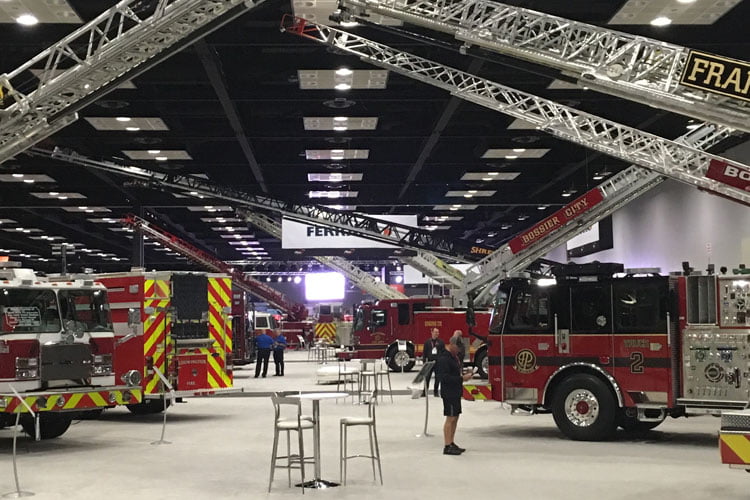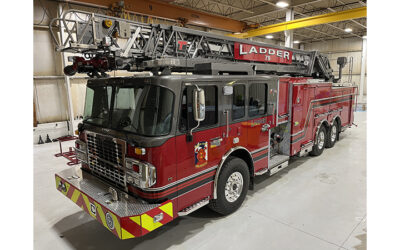By Bill Adams
After cruising several apparatus manufacturers’ Web sites and attending local and regional fire service trade shows, I’ve noticed many apparatus manufacturers are making modifications in the various ways they address the marketplace. Some are quite obvious while others are somewhat subtle. Judgement is not being made as to whether such changes are good or bad. The intent is to make potential purchasers aware of them. Purchasing a fire truck is a major responsibility, and purchasers should always look beyond the glitz and glitter of advertising. My observations are based on previous experience in both selling and purchasing fire apparatus and attending trade shows since the 1970s.
The dictionary defines marketing as selling, advertising, and making a presentation. In this article, data is the information a manufacturer wants controlled. “Traffic” is the potential customers attending a trade show. Control is how a manufacturer regulates or manipulates both. Ralph Waldo Emerson is credited with the saying: “Build a better mousetrap, and the world will beat a path to your door.” Some apparatus manufacturers excel in doing so and credit must be given where credit is due. Kudos to any manufacturer who can convince or influence a potential customer to want to purchase his product.
Trade Show Traffic Control
Controlling and directing the movement of large numbers of people has been perfected by theme parks—especially so by some famous ones in Florida. Apparatus placement at trade shows has also become an art. Some larger manufacturers strategically place their rigs to direct potential purchasers. Several circle the wagons with their rigs so prime features such as pump panels and the driver’s doors face the inner circle. That’s smart. Chassis manufacturers specifically place their rigs to give a first and hopefully impressionable view of their cabs. Another smart move.
Astute purchasers should realize that there’s more than one side of a fire truck to evaluate. They should also take into consideration there are many small and midsize manufacturers of quality fire apparatus that simply cannot afford large and sometimes costly display areas. Look beyond the pizzazz and sparkle. The brightest flashing neon lights don’t necessarily illuminate the best quality, design, and workmanship.
Free Engineering
It is very common for manufacturers to provide single-sheet hand-out literature for each apparatus being displayed. The two-sided flyers typically incorporate photographs showing each side and highlighting specific features such as hosebeds or pump panels. Brief descriptions and usually highly detailed blue prints are included—albeit hard to read without a magnifying glass! Manufacturers eagerly collect each other’s literature. They should thank each other for providing engineering data. Detailed compartment dimensions, sizes of pump houses, hosebed dimensions, cab-to-axle measurements, overall heights and lengths, axle weight ratings, and a host of other data are free for the taking. This year, several manufacturers did not provide highly detailed engineering data on their flyers. I expect others will follow suit. All manufacturers want to promote their expertise but why design and engineer a fire truck for your competitor? Perhaps they should provide enough information to whet a purchaser’s appetite while not giving the store away.
Web Sites
Some apparatus manufacturers’ Web sites no longer list corporate officers and key personnel in sales and service departments with -mail addresses and sometimes phone numbers. I would venture the reason is to keep from overloading key personnel with unnecessary communications. Another possibility is to channel and possibly expedite requests to the proper people. Another guess is with all the mergers, consolidations, and buy-outs, people may be changing titles or even places of employment. That also is understandable.
Full-sized brochures and product catalogs appear to be becoming things of the past. Many manufacturers at tradeshows no longer offer them or limit their distribution. Some manufacturers’ Web sites no longer allow potential customers to download full catalogs. Many Web sites require “seekers of information” to complete brief online questionnaires. That way, they can regulate and control who gets what and eliminate tire kickers. Concurrently, they can build a database of potential customers for later marketing efforts. That’s another smart move, although sometimes annoying to the purchaser.
It is understandable that manufacturers want to reduce costs. From a purchaser’s point of view, making it extremely hard to obtain information about a product may influence the purchaser to look elsewhere. Purchasers should realize the cost of trade shows and advertising materials are amortized over the total number of rigs a manufacturer builds and added to the cost of the fire truck.
BILL ADAMS is a member of the Fire Apparatus & Emergency Equipment Editorial Advisory Board, a former fire apparatus salesman, and a past chief of the East Rochester (NY) Fire Department. He has 50 years of experience in the volunteer fire service.






